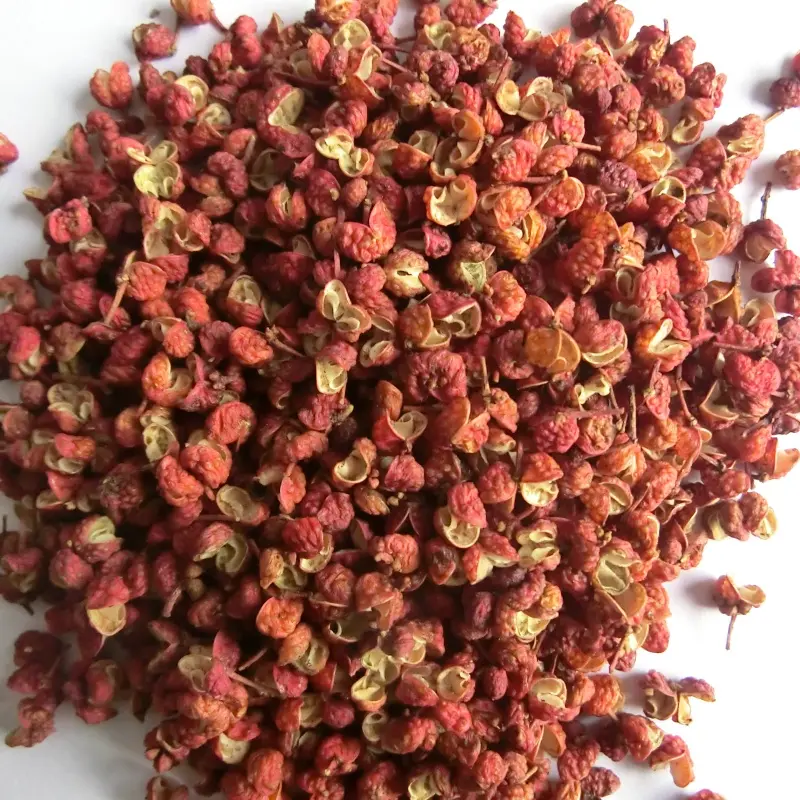Cooking with Sichuan Peppercorns for Beginners
Sichuan peppercorns, also known as Szechuan peppercorns, are a staple in Chinese cuisine, particularly in the Sichuan province. Despite their name, these peppercorns are not related to black pepper or chili peppers. They are the dried husks of the prickly ash shrub's seeds and are renowned for their unique flavor and numbing sensation. This tingling feeling, known as "má," is a hallmark of Sichuan cuisine, creating a complex taste experience that combines heat, numbing, and aromatic qualities.
The Unique Flavor Profile
Sichuan peppercorns have a distinct flavor profile that is citrusy, slightly peppery, and floral. The initial taste can be slightly bitter, but it quickly transforms into a numbing sensation that stimulates the taste buds. This numbing effect is due to hydroxy-alpha-sanshool, a compound found in the peppercorns. This compound interacts with the nerves in the mouth, creating a tingling sensation that enhances the perception of other flavors, making dishes more vibrant and exciting.
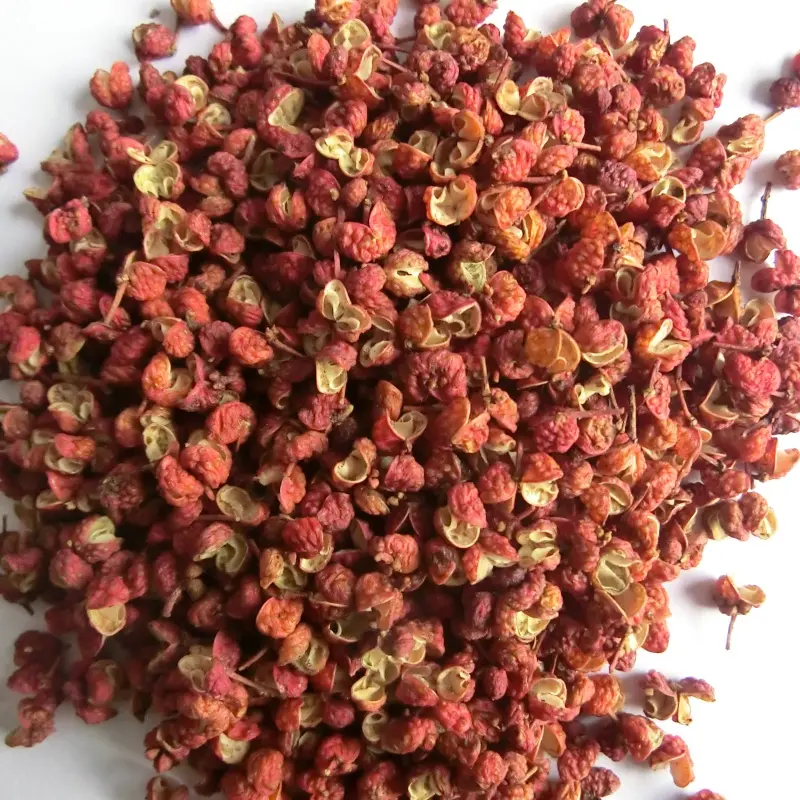
Choosing and Preparing Sichuan Peppercorns
When selecting Sichuan peppercorns, look for bright red or reddish-brown husks with a strong, fragrant aroma. Avoid those that are dark, dull, or have seeds, as they can be bitter. Once you have your peppercorns, it's essential to prepare them correctly to bring out their best qualities.
Toasting
Toasting Sichuan peppercorns before use enhances their aroma and flavor. Heat a dry skillet over medium heat and add the peppercorns. Stir them constantly for a few minutes until they become fragrant and slightly darker. Be careful not to burn them, as this can make them bitter.
Grinding
After toasting, grind the peppercorns using a mortar and pestle or a spice grinder. Sift the ground peppercorns to remove any larger, woody pieces. The result should be a fine, fragrant powder that can be used in various dishes.
Essential Sichuan Peppercorn Dishes
Sichuan Peppercorn Oil
Sichuan peppercorn oil is a versatile ingredient that can be used to add a burst of flavor to many dishes. To make the oil, heat vegetable oil in a pan until it reaches about 300°F (150°C). Add a handful of toasted Sichuan peppercorns and let them steep for a few minutes until they release their aroma. Remove the pan from the heat and let the oil cool before straining out the peppercorns. Store the oil in a sealed container and use it to enhance stir-fries, noodles, and salads.
Mapo Tofu
Mapo tofu is a classic Sichuan dish that combines tofu with ground pork, fermented bean paste, and, of course, Sichuan peppercorns. The dish is known for its numbing and spicy flavors, making it a great introduction to cooking with Sichuan peppercorns.
Ingredients:
1 block of firm tofu, cubed
200g ground pork
2 tablespoons vegetable oil
2 tablespoons doubanjiang (fermented broad bean paste)
1 tablespoon douchi (fermented black beans), minced
1 tablespoon ginger, minced
2 cloves garlic, minced
1 cup chicken broth
1 tablespoon soy sauce
1 teaspoon sugar
1 tablespoon cornstarch mixed with 2 tablespoons water
2 teaspoons ground Sichuan peppercorns
2 green onions, chopped
Instructions:
Heat the oil in a wok or large skillet over medium-high heat. Add the ground pork and cook until browned.
Add the doubanjiang, douchi, ginger, and garlic. Stir-fry for a few minutes until fragrant.
Add the chicken broth, soy sauce, and sugar. Bring to a boil.
Gently add the tofu cubes and simmer for 5 minutes.
Stir in the cornstarch mixture and cook until the sauce thickens.
Sprinkle with ground Sichuan peppercorns and green onions before serving.
Kung Pao Chicken
Kung Pao Chicken is another popular Sichuan dish that balances spicy, sweet, and savory flavors with the numbing sensation of Sichuan peppercorns.
Ingredients:
300g chicken breast, diced
2 tablespoons soy sauce
1 tablespoon rice wine
1 teaspoon cornstarch
2 tablespoons vegetable oil
1 tablespoon Sichuan peppercorns
8-10 dried red chilies, cut into pieces
2 cloves garlic, minced
1 tablespoon ginger, minced
1 green bell pepper, diced
1 red bell pepper, diced
1/4 cup roasted peanuts
Sauce:
1 tablespoon soy sauce
1 tablespoon rice vinegar
1 tablespoon hoisin sauce
1 teaspoon sugar
1 teaspoon cornstarch mixed with 1 tablespoon water
Instructions:
Marinate the chicken with soy sauce, rice wine, and cornstarch for 15 minutes.
Heat the oil in a wok over medium-high heat. Add the Sichuan peppercorns and dried chilies. Stir-fry until fragrant.
Add the chicken and cook until it turns golden brown.
Add the garlic, ginger, and bell peppers. Stir-fry for a few minutes until the vegetables are tender.
Mix the sauce ingredients in a bowl. Pour the sauce into the wok and stir until the chicken and vegetables are coated.
Stir in the roasted peanuts and cook for another minute. Serve hot.
Exploring Further: Variations and Innovations
Once you've mastered the basics, you can experiment with Sichuan peppercorns in various dishes. Here are a few ideas to get you started:
Sichuan Peppercorn Salt
Sichuan peppercorn salt is a simple yet powerful seasoning that can be used to enhance the flavor of many dishes. To make it, toast and grind equal parts Sichuan peppercorns and coarse salt. Use this mixture to season grilled meats, seafood, or vegetables.
Sichuan Peppercorn Infused Desserts
Sichuan peppercorns can also add an unexpected twist to desserts. Infuse cream or milk with toasted Sichuan peppercorns before using it to make ice cream, panna cotta, or custard. The numbing sensation and citrusy flavor can create a delightful contrast with the sweetness of these treats.
Sichuan Peppercorn Cocktails
Incorporate Sichuan peppercorns into cocktails for a unique and refreshing twist. Make a Sichuan peppercorn syrup by simmering equal parts sugar and water with toasted peppercorns. Strain the syrup and use it to sweeten and flavor cocktails like margaritas, gin and tonics, or mojitos.
Cooking Tips and Safety
Cooking with Sichuan peppercorns can be an exciting culinary adventure, but it's essential to handle them properly to ensure the best results.
Start Small: If you're new to Sichuan peppercorns, start with small amounts and gradually increase the quantity as you become accustomed to the flavor and numbing sensation.
Balance Flavors: Sichuan peppercorns are often used in combination with other bold flavors, such as garlic, ginger, chili, and soy sauce. Balancing these flavors will help create a harmonious dish.
Use Fresh Peppercorns: For the best flavor and aroma, use fresh Sichuan peppercorns. Store them in an airtight container away from light and heat to preserve their potency.
Avoid Overcooking: Overcooking Sichuan peppercorns can lead to bitterness. Toast them briefly and add them towards the end of cooking to maintain their vibrant flavor.
Differences between Sichuan Peppercorns, Black Peppercorns and Chili Peppers
Sichuan peppercorns, despite their name, are not related to black peppercorns or chili peppers. They are the dried husks of the seeds from the prickly ash tree, native to the Sichuan province of China. This unique spice is renowned for its ability to create a numbing and tingling sensation on the tongue, known as "má," which is a hallmark of Sichuan cuisine.
Differences from Black Peppercorns:
Botanical Family: Sichuan peppercorns belong to the Rutaceae family, which also includes citrus plants, while black peppercorns come from the Piperaceae family.
Flavor Profile: Sichuan peppercorns have a distinctive citrusy, slightly floral aroma with a mild peppery taste. In contrast, black peppercorns have a sharp, pungent flavor.
Sensory Experience: The numbing sensation caused by Sichuan peppercorns is due to the compound hydroxy-alpha-sanshool, which interacts with the nerves in the mouth. Black peppercorns do not have this numbing effect but are known for their spiciness and heat.
Differences from Chili Peppers:
Botanical Family: Chili peppers belong to the Solanaceae family, unlike Sichuan peppercorns. They are fruits of plants from the genus Capsicum.
Flavor Profile: Chili peppers are known for their intense heat, provided by the compound capsaicin, which stimulates the pain receptors in the mouth. Sichuan peppercorns, on the other hand, offer a unique combination of numbing and tingling without significant heat.
Culinary Uses: Chili peppers are often used to add heat to dishes, while Sichuan peppercorns contribute to both flavor and a sensory experience that enhances other flavors in the dish.
Culinary Uses and Examples:
Mapo Tofu: This iconic Sichuan dish combines soft tofu with ground pork, fermented bean paste, and a generous amount of Sichuan peppercorns. The peppercorns provide a complex flavor and the signature numbing sensation that balances the heat from the chili peppers.
Kung Pao Chicken: Another popular dish, Kung Pao Chicken, uses Sichuan peppercorns to add a unique twist to the sweet, savory, and slightly spicy sauce. The numbing effect of the peppercorns enhances the overall flavor profile.
Sichuan Peppercorn Oil: Sichuan peppercorns can be infused into oil to create a versatile condiment that can be drizzled over noodles, used in stir-fries, or added to salads for an extra layer of flavor and the numbing sensation.
Health Benefits:
Sichuan peppercorns are not only a culinary delight but also have several health benefits:
Digestive Aid: The spice is known to stimulate digestion and can help with gastrointestinal issues.
Anti-inflammatory Properties: Sichuan peppercorns have been used in traditional medicine for their anti-inflammatory properties.
Rich in Antioxidants: They contain antioxidants that help protect the body against free radicals.
In summary, Sichuan peppercorns are a unique spice with a distinct flavor and numbing sensation, setting them apart from black peppercorns and chili peppers. They play a crucial role in Sichuan cuisine, offering both culinary and health benefits.
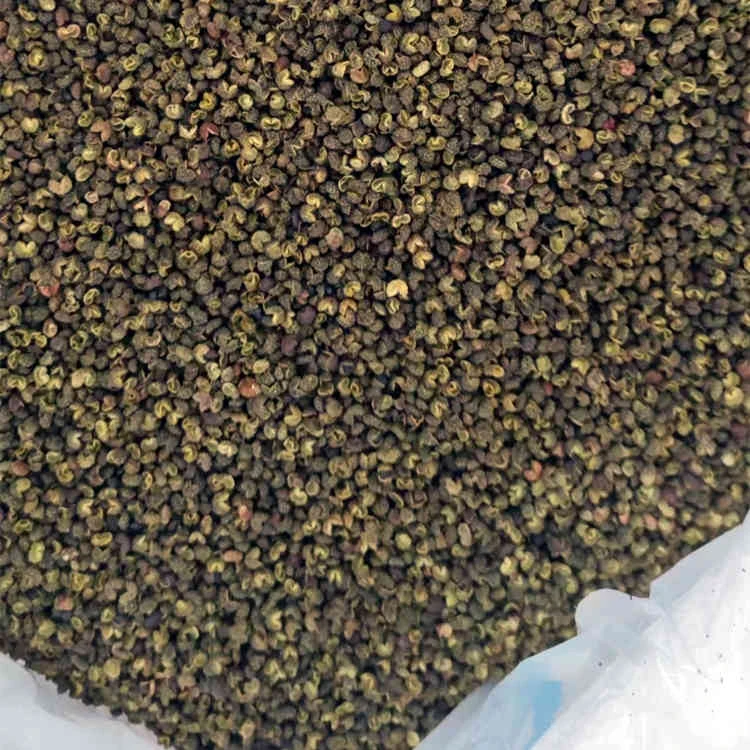
Proper Preparation and Storage of Sichuan Peppercorns for Cooking
Proper preparation and storage of Sichuan peppercorns are crucial to maintaining their unique flavor and numbing sensation. Here’s a step-by-step guide on how to prepare and store these peppercorns effectively.
Preparation:
Selecting the Peppercorns:
Choose bright red or reddish-brown peppercorns with a strong, citrusy aroma.
Avoid dark, dull, or seed-filled peppercorns, as they can be bitter and less flavorful.
Toasting:
Toasting Sichuan peppercorns is essential to release their aromatic oils and enhance their flavor.
Heat a dry skillet over medium heat.
Add the peppercorns and toast them for a few minutes, stirring constantly until they become fragrant and slightly darker in color.
Be careful not to burn them, as this can lead to bitterness.
Grinding:
After toasting, grind the peppercorns using a mortar and pestle or a spice grinder.
Sift the ground peppercorns to remove any larger, woody pieces, ensuring a fine, fragrant powder.
This powder can be used directly in recipes or stored for later use.
Infusing:
Sichuan peppercorns can also be infused in oil or alcohol to create flavored oils or extracts.
To make Sichuan peppercorn oil, heat vegetable oil in a pan until it reaches about 300°F (150°C). Add a handful of toasted peppercorns and let them steep for a few minutes until they release their aroma.
Remove the pan from the heat, let the oil cool, and strain out the peppercorns before storing the oil in a sealed container.
Storage:
Whole Peppercorns:
Store whole Sichuan peppercorns in an airtight container to protect them from air, moisture, and light.
Place the container in a cool, dark place, such as a pantry or cupboard, to preserve their potency.
Properly stored whole peppercorns can last for up to a year.
Ground Peppercorns:
Ground Sichuan peppercorns have a shorter shelf life than whole ones.
Store the ground powder in an airtight container, away from light and heat.
Use ground peppercorns within a few months to ensure the best flavor and aroma.
Sichuan Peppercorn Oil:
Store the infused oil in a sealed container, preferably a glass bottle, to prevent contamination and preserve the flavor.
Keep the oil in a cool, dark place, or refrigerate it for extended shelf life.
Use the oil within six months for optimal flavor.
Examples and Tips:
Mapo Tofu: When making Mapo Tofu, add freshly toasted and ground Sichuan peppercorns towards the end of cooking to maximize their numbing effect and aroma.
Kung Pao Chicken: Use Sichuan peppercorn oil to stir-fry the chicken and vegetables, adding an extra layer of flavor and numbing sensation to the dish.
Spice Blends: Sichuan peppercorns can be combined with other spices like star anise, cloves, and fennel seeds to create a flavorful spice blend for various dishes.
Pro Tips:
Toast and grind small batches of Sichuan peppercorns to maintain their freshness and potency.
Experiment with different amounts of peppercorns to find the right balance of flavor and numbing sensation for your taste.
Be mindful of the peppercorns' potency and start with smaller quantities, especially if you are new to using them.
In summary, proper preparation and storage of Sichuan peppercorns involve selecting high-quality peppercorns, toasting them to release their flavor, grinding them for use, and storing them in airtight containers away from light and heat. These steps ensure that you get the most out of this unique and flavorful spice in your cooking.
Popular Dishes Featuring Sichuan Peppercorns
Sichuan peppercorns are a key ingredient in many iconic Sichuan dishes, known for their unique numbing sensation and complex flavor profile. Here are some popular dishes that feature Sichuan peppercorns, along with detailed recipes to make them.
1. Mapo Tofu
Ingredients:
1 block of firm tofu, cubed
200g ground pork
2 tablespoons vegetable oil
2 tablespoons doubanjiang (fermented broad bean paste)
1 tablespoon douchi (fermented black beans), minced
1 tablespoon ginger, minced
2 cloves garlic, minced
1 cup chicken broth
1 tablespoon soy sauce
1 teaspoon sugar
1 tablespoon cornstarch mixed with 2 tablespoons water
2 teaspoons ground Sichuan peppercorns
2 green onions, chopped
Instructions:
Heat the oil in a wok or large skillet over medium-high heat. Add the ground pork and cook until browned.
Add the doubanjiang, douchi, ginger, and garlic. Stir-fry for a few minutes until fragrant.
Add the chicken broth, soy sauce, and sugar. Bring to a boil.
Gently add the tofu cubes and simmer for 5 minutes.
Stir in the cornstarch mixture and cook until the sauce thickens.
Sprinkle with ground Sichuan peppercorns and green onions before serving.
2. Kung Pao Chicken
Ingredients:
300g chicken breast, diced
2 tablespoons soy sauce
1 tablespoon rice wine
1 teaspoon cornstarch
2 tablespoons vegetable oil
1 tablespoon Sichuan peppercorns
8-10 dried red chilies, cut into pieces
2 cloves garlic, minced
1 tablespoon ginger, minced
1 green bell pepper, diced
1 red bell pepper, diced
1/4 cup roasted peanuts
Sauce:
1 tablespoon soy sauce
1 tablespoon rice vinegar
1 tablespoon hoisin sauce
1 teaspoon sugar
1 teaspoon cornstarch mixed with 1 tablespoon water
Instructions:
Marinate the chicken with soy sauce, rice wine, and cornstarch for 15 minutes.
Heat the oil in a wok over medium-high heat. Add the Sichuan peppercorns and dried chilies. Stir-fry until fragrant.
Add the chicken and cook until it turns golden brown.
Add the garlic, ginger, and bell peppers. Stir-fry for a few minutes until the vegetables are tender.
Mix the sauce ingredients in a bowl. Pour the sauce into the wok and stir until the chicken and vegetables are coated.
Stir in the roasted peanuts and cook for another minute. Serve hot.
3. Dan Dan Noodles
Ingredients:
200g ground pork
2 tablespoons vegetable oil
1 tablespoon doubanjiang (fermented broad bean paste)
1 tablespoon douchi (fermented black beans), minced
1 tablespoon ginger, minced
2 cloves garlic, minced
2 tablespoons soy sauce
1 tablespoon rice vinegar
1 teaspoon sugar
2 teaspoons ground Sichuan peppercorns
250g wheat noodles, cooked
2 green onions, chopped
1/4 cup roasted peanuts, chopped
Instructions:
Heat the oil in a wok over medium-high heat. Add the ground pork and cook until browned.
Add the doubanjiang, douchi, ginger, and garlic. Stir-fry for a few minutes until fragrant.
Add the soy sauce, rice vinegar, and sugar. Cook until the mixture is well combined.
Stir in the ground Sichuan peppercorns.
Divide the cooked noodles into bowls. Top with the pork mixture.
Garnish with chopped green onions and roasted peanuts. Serve immediately.
4. Sichuan Peppercorn Oil
Ingredients:
1 cup vegetable oil
2 tablespoons Sichuan peppercorns
Instructions:
Heat the oil in a pan until it reaches about 300°F (150°C).
Add the Sichuan peppercorns and let them steep for a few minutes until they release their aroma.
Remove the pan from the heat and let the oil cool.
Strain out the peppercorns and store the oil in a sealed container.
Use the oil to enhance stir-fries, noodles, and salads.
5. Hot and Sour Soup
Ingredients:
4 cups chicken broth
1/2 cup sliced mushrooms
1/2 cup bamboo shoots, julienned
1/4 cup firm tofu, cubed
2 tablespoons soy sauce
2 tablespoons rice vinegar
1 teaspoon white pepper
2 teaspoons ground Sichuan peppercorns
1 egg, lightly beaten
2 tablespoons cornstarch mixed with 3 tablespoons water
2 green onions, chopped
Instructions:
Bring the chicken broth to a boil in a large pot.
Add the mushrooms, bamboo shoots, tofu, soy sauce, and rice vinegar. Simmer for 5 minutes.
Stir in the white pepper and ground Sichuan peppercorns.
Slowly pour in the beaten egg while stirring the soup to create egg ribbons.
Add the cornstarch mixture and cook until the soup thickens.
Garnish with chopped green onions before serving.
These popular Sichuan dishes showcase the unique flavor and numbing sensation of Sichuan peppercorns. Each recipe highlights different aspects of this versatile spice, from its aromatic qualities in Mapo Tofu and Kung Pao Chicken to its enhancing role in Dan Dan Noodles and Hot and Sour Soup. Experiment with these recipes to experience the bold and exciting flavors of Sichuan cuisine.
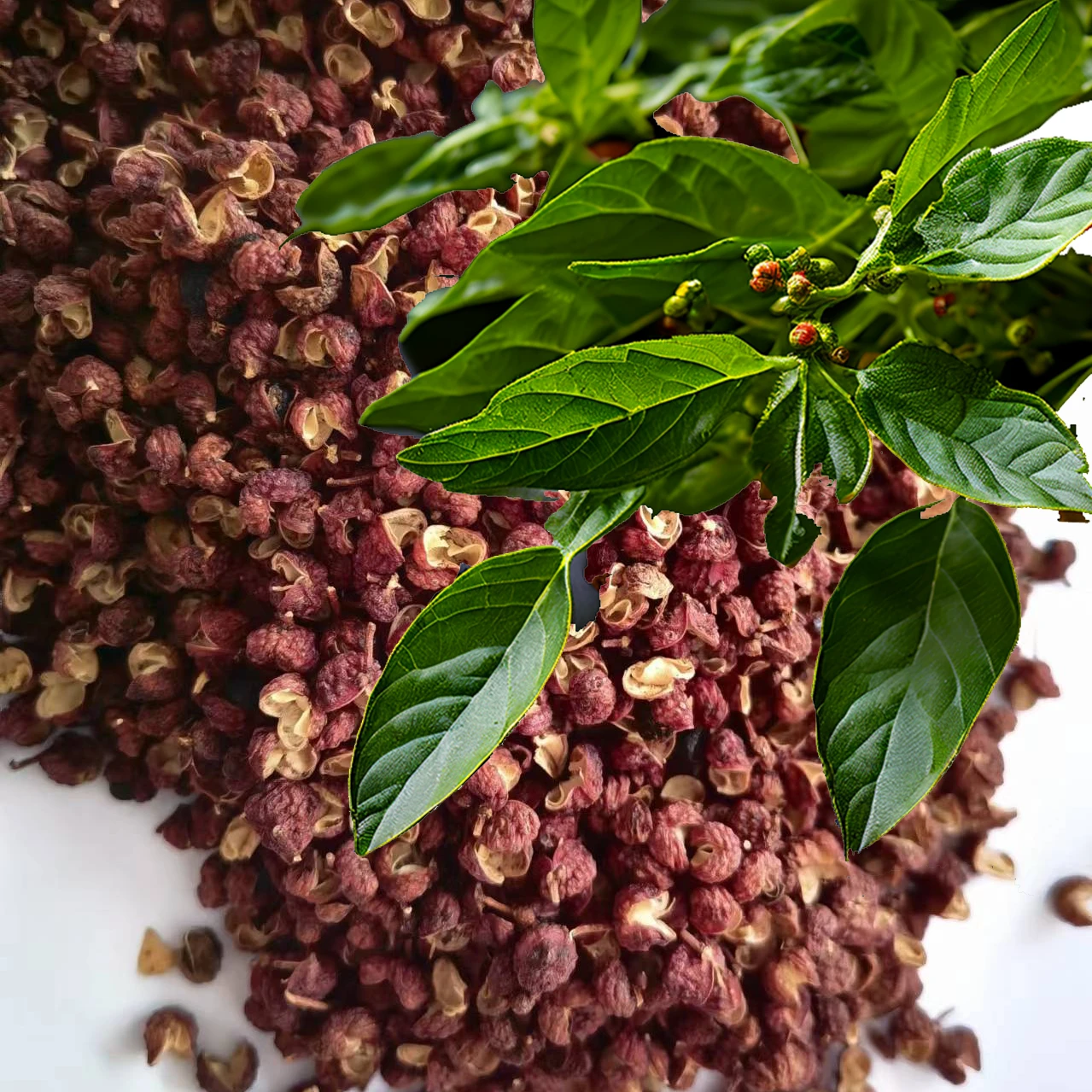
Preserving the Freshness and Flavor of Sichuan Peppercorns
Proper storage of Sichuan peppercorns is essential to maintain their freshness, flavor, and unique numbing sensation. Improper storage can lead to a loss of potency and aroma, making them less effective in enhancing your dishes. Here’s a comprehensive guide on how to store Sichuan peppercorns to preserve their quality:
1. Store in an Airtight Container:
Sichuan peppercorns should be stored in an airtight container to protect them from air and moisture. Exposure to air can cause the peppercorns to oxidize, losing their flavor and aroma over time. Moisture can lead to mold growth, ruining the peppercorns.
Example:Use glass jars with tight-fitting lids, vacuum-sealed bags, or high-quality plastic containers designed for spices. Ensure the containers are clean and completely dry before storing the peppercorns.
2. Keep in a Cool, Dark Place:
Heat and light can degrade the essential oils in Sichuan peppercorns, reducing their potency. Store them in a cool, dark place, such as a pantry or cupboard, away from direct sunlight and heat sources like stovetops or ovens.
Example:Place the airtight container in a kitchen cabinet or pantry that is not exposed to frequent temperature fluctuations. Avoid storing near windows or appliances that generate heat.
3. Avoid Storing in the Refrigerator:
While refrigeration might seem like a good idea to extend the shelf life of spices, it can cause condensation, leading to moisture buildup and potential mold growth. The fluctuating humidity in the refrigerator can also affect the quality of the peppercorns.
Example:If you live in a particularly humid environment, consider using silica gel packets in the storage container to absorb excess moisture instead of refrigerating the peppercorns.
4. Use Whole Peppercorns Over Ground:
Whole Sichuan peppercorns retain their flavor and numbing properties longer than ground peppercorns. Grind them as needed to ensure maximum freshness and potency in your dishes.
Example:Invest in a small spice grinder or mortar and pestle to grind the peppercorns just before use. This practice helps maintain the spice’s vibrant flavor and unique numbing sensation.
5. Monitor for Freshness:
Even with proper storage, Sichuan peppercorns will eventually lose their potency. Regularly check for freshness by rubbing a few peppercorns between your fingers. If they no longer have a strong aroma or numbing sensation, it’s time to replace them.
Example:Mark the date of purchase or storage on the container to keep track of how long you’ve had the peppercorns. Generally, properly stored Sichuan peppercorns can maintain their quality for up to one year.
Storing Sichuan peppercorns properly ensures that they retain their distinctive flavor and numbing sensation, making your dishes more authentic and enjoyable. Use airtight containers, keep them in a cool, dark place, avoid refrigeration, use whole peppercorns, and regularly check for freshness. By following these guidelines, you can enjoy the full benefits of Sichuan peppercorns in your cooking for an extended period.
Planting Steps and Requirements for Growing Pepper at Home
Growing Sichuan peppercorns at home can be a rewarding endeavor, especially for those who enjoy gardening and cooking with fresh, homegrown spices. While it requires some patience and specific conditions, it is possible to cultivate Sichuan peppercorn plants in your garden or even in pots. Here’s a step-by-step guide on how to grow Sichuan peppercorns at home:
1. Understanding the Plant:
Sichuan peppercorns come from the Zanthoxylum genus, which includes several species suitable for cultivation. These plants are deciduous shrubs or small trees, typically growing to a height of 10-20 feet (3-6 meters).
2. Climate and Location:
Sichuan peppercorn plants thrive in temperate climates. They prefer well-drained soil and a sunny to partially shaded location. They are hardy and can tolerate temperatures as low as -10°C (14°F), making them suitable for USDA hardiness zones 6-9.
Example:If you live in a region with hot summers and cold winters, Sichuan peppercorn plants can do well in your garden. If your climate is not ideal, consider growing them in pots to move them indoors during extreme weather.
3. Soil Preparation:
Prepare the soil by ensuring it is well-draining and rich in organic matter. A slightly acidic to neutral pH (6.0-7.0) is ideal for Sichuan peppercorn plants.
Example:Mix compost or well-rotted manure into the soil to improve fertility and drainage. Avoid heavy clay soils that retain water, as this can lead to root rot.
4. Planting:
You can grow Sichuan peppercorns from seeds or young plants. If using seeds, they should be stratified (chilled) for several weeks to break dormancy before planting.
Steps for Seed Stratification:
Place the seeds in a damp paper towel inside a plastic bag.
Store the bag in the refrigerator for 4-6 weeks.
After stratification, sow the seeds in pots or directly in the ground, covering them lightly with soil.
Example:If planting young plants, dig a hole twice the size of the root ball and place the plant in the hole, backfilling with soil and gently firming it around the base.
5. Watering and Maintenance:
Water the plants regularly, keeping the soil moist but not waterlogged. Mulch around the base of the plants to retain moisture and suppress weeds.
Example:During dry periods, water deeply once a week. Reduce watering in the winter when the plants are dormant.
6. Fertilization:
Feed the plants with a balanced fertilizer in the spring and early summer to promote healthy growth and fruit production.
Example:Use an all-purpose fertilizer or one specifically designed for fruiting plants. Follow the manufacturer’s instructions for application rates.
7. Pruning:
Prune the plants in late winter or early spring to remove dead or damaged branches and to shape the plant.
Example:Pruning helps maintain the plant’s size and encourages more prolific flowering and fruiting.
8. Harvesting:
Sichuan peppercorns typically produce fruit in the late summer to early autumn. The berries turn red and split open to reveal the black seeds inside.
Steps for Harvesting:
Wait until the berries are fully ripe and have split open.
Pick the berries and remove the seeds, retaining the husks for culinary use.
Dry the husks in a well-ventilated area before storing.
Example:Dry the husks on a clean tray in a single layer, turning them occasionally until they are completely dry. Store in an airtight container in a cool, dark place.
Growing Sichuan peppercorns at home requires specific conditions and care, but the reward of having fresh, aromatic peppercorns for your culinary creations is well worth the effort. By understanding the plant’s needs, preparing the soil properly, and providing regular maintenance, you can successfully cultivate Sichuan peppercorn plants and enjoy their unique flavor in your cooking.
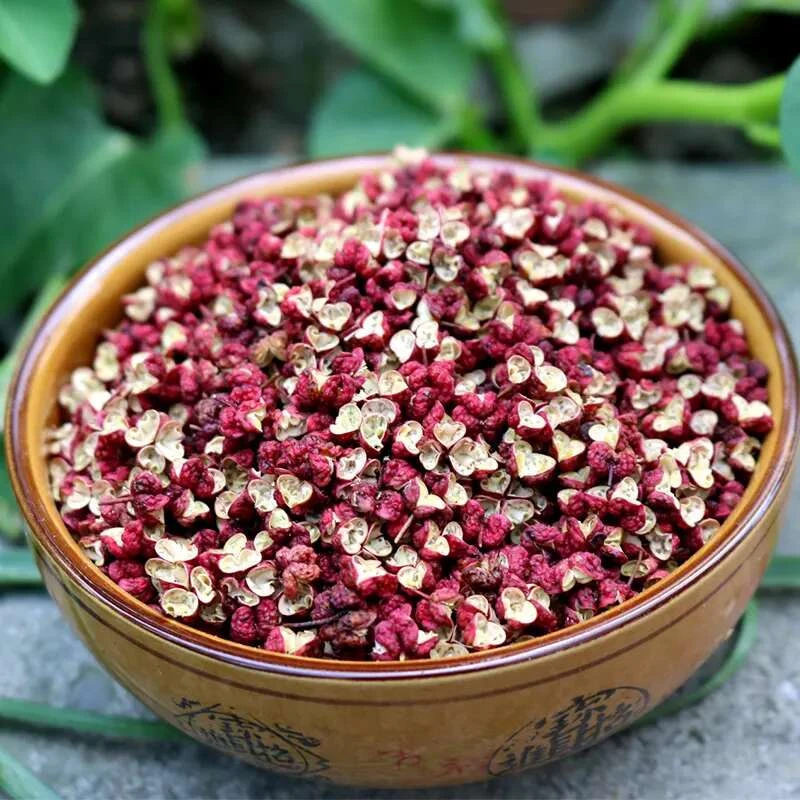
Conclusion
Cooking with Sichuan peppercorns opens up a world of bold, exciting flavors and sensations. Their unique combination of citrusy aroma, numbing effect, and spicy undertones can transform ordinary dishes into extraordinary culinary experiences. Whether you're making traditional Sichuan dishes like Mapo Tofu and Kung Pao Chicken or experimenting with innovative recipes, Sichuan peppercorns are sure to add a delightful twist to your cooking.
With these tips and recipes, beginners can confidently start their journey into Sichuan cuisine and discover the magic of Sichuan peppercorns. Happy cooking!
If you want to know more, please feel free to contact us.
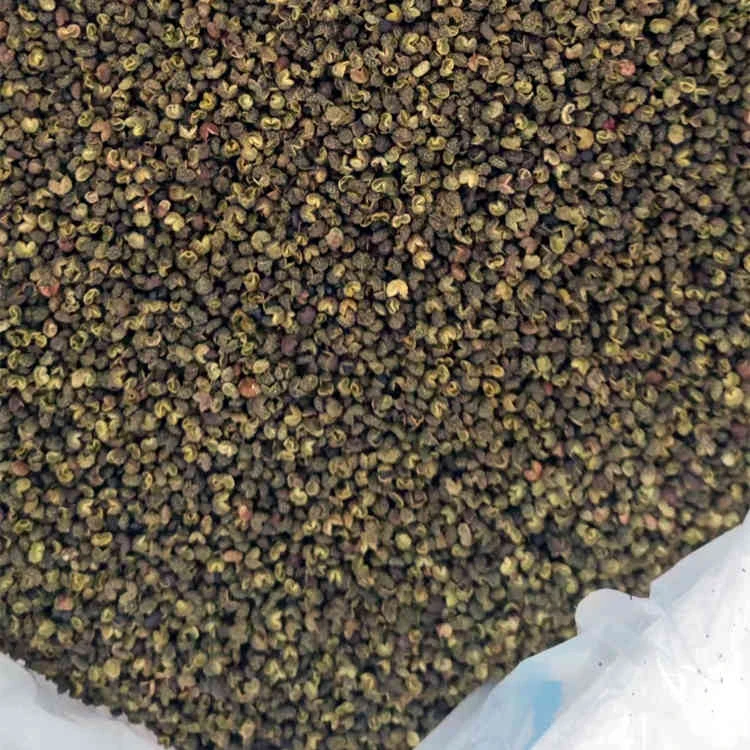
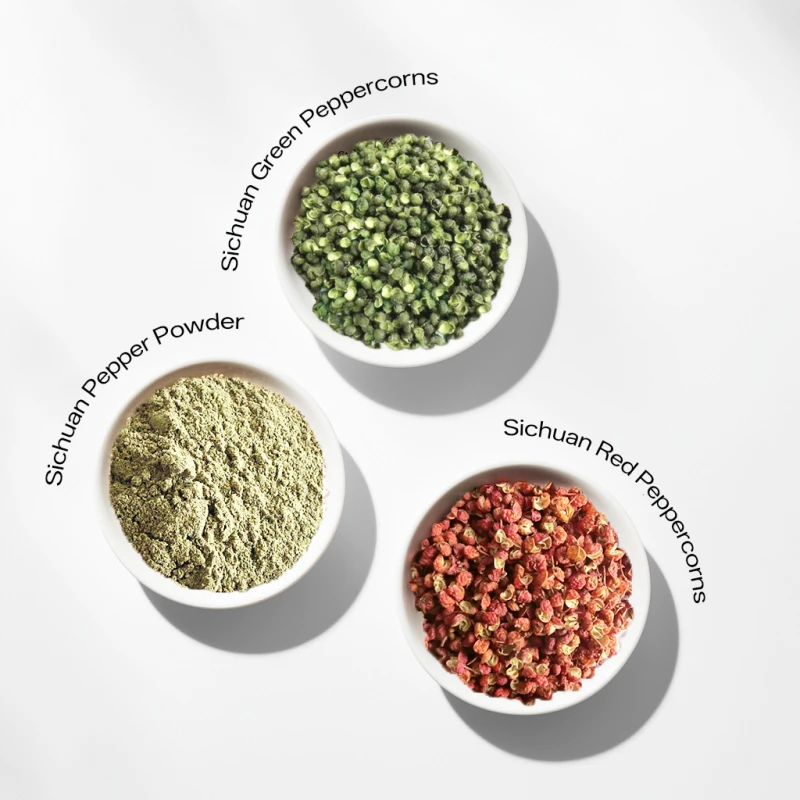
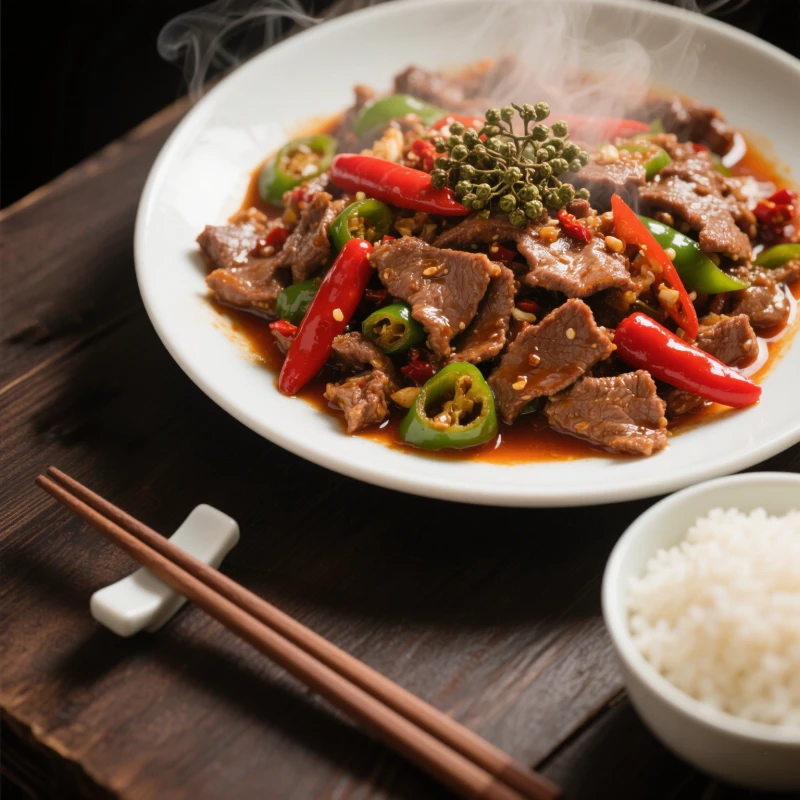

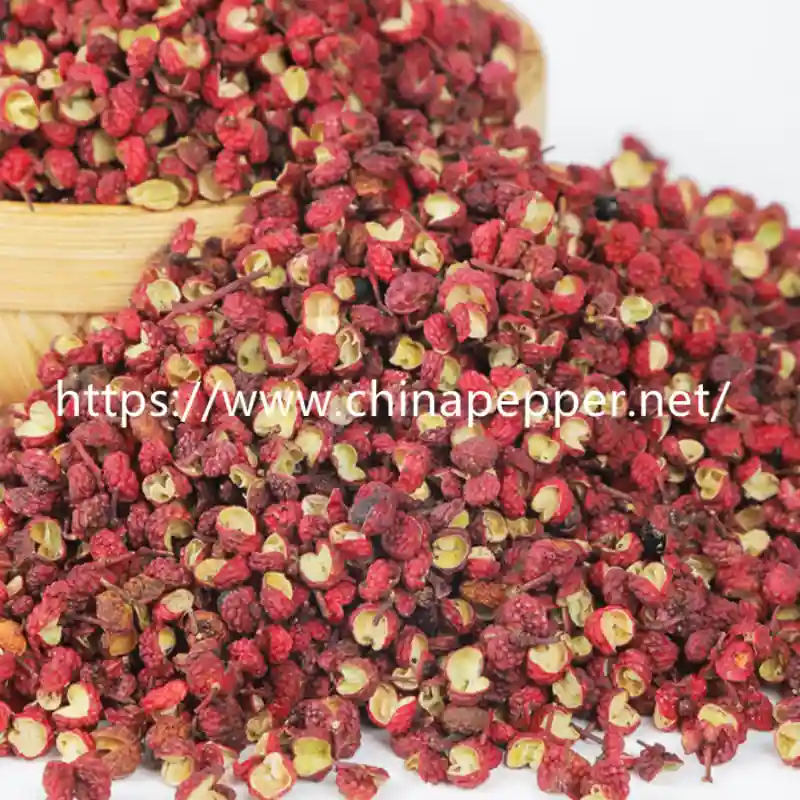
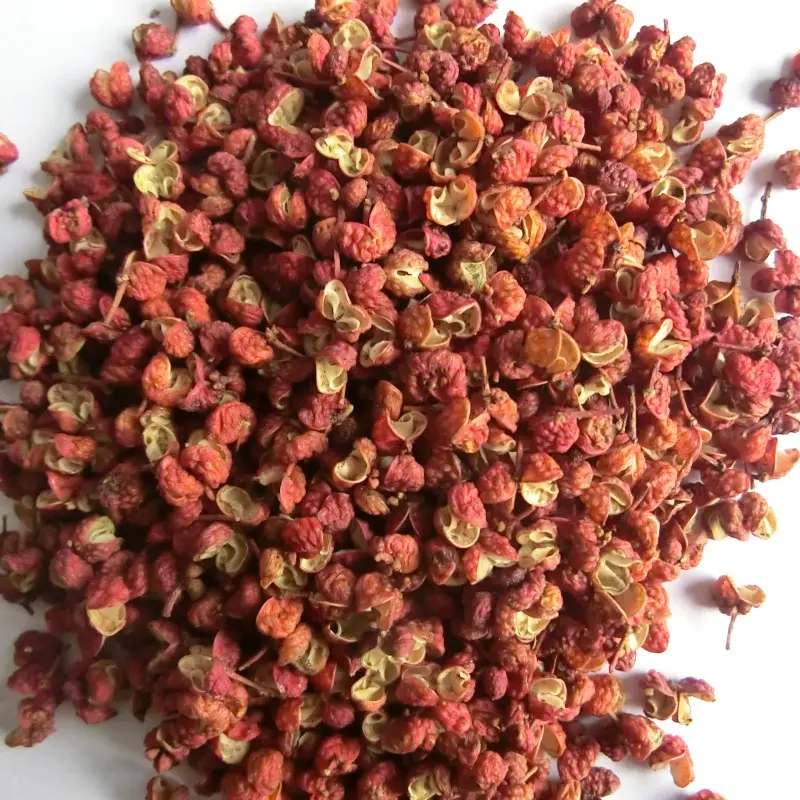
811.webp)
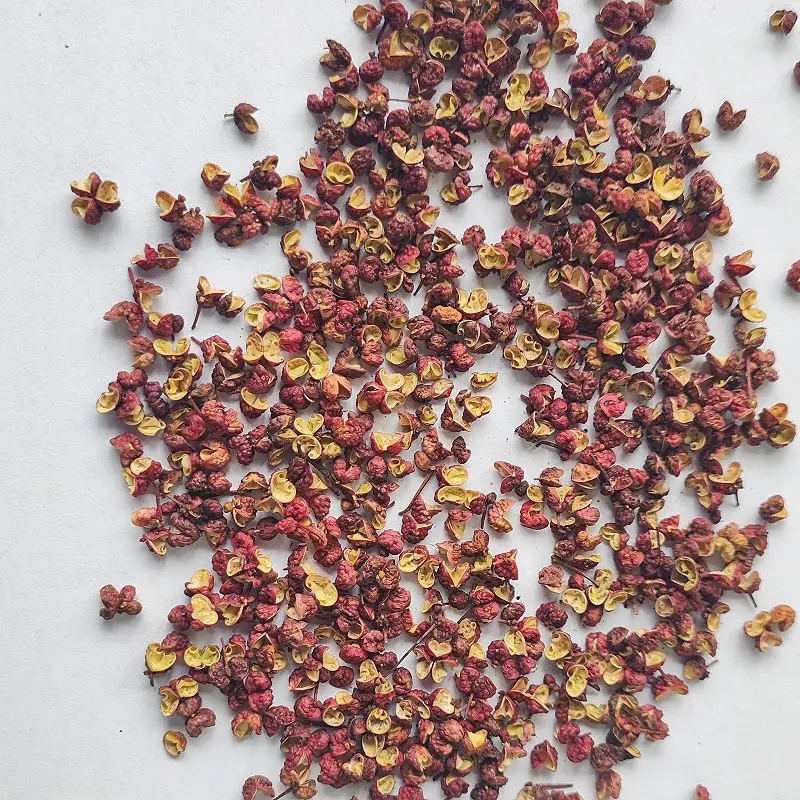
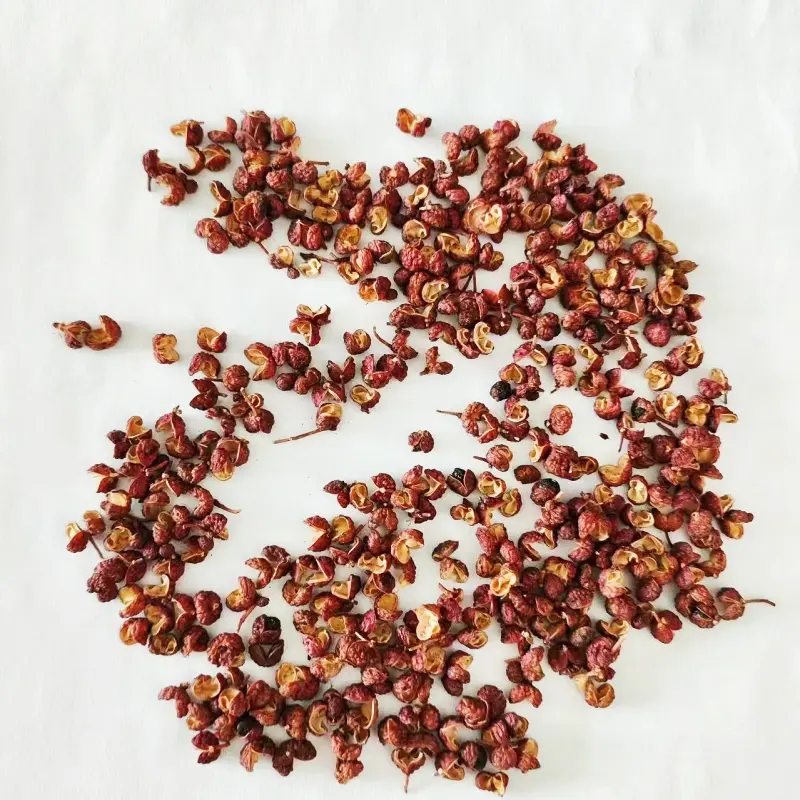
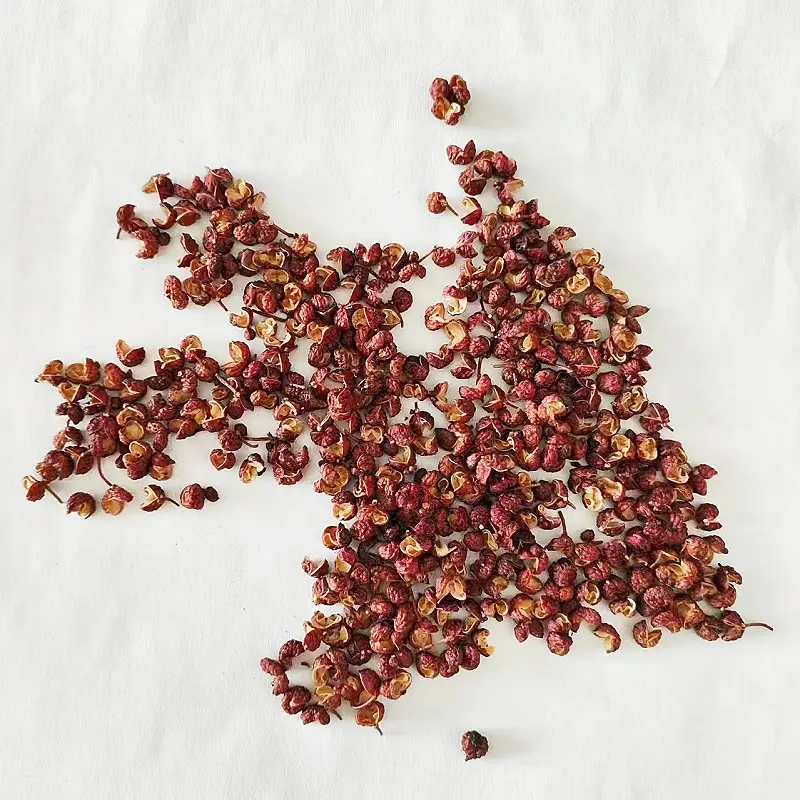
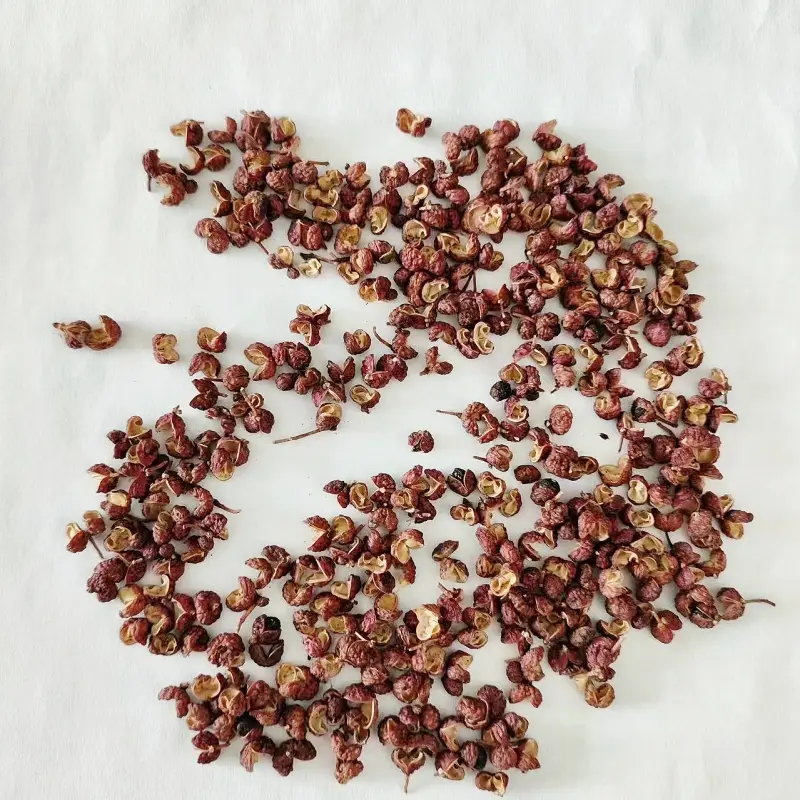
114.webp)
